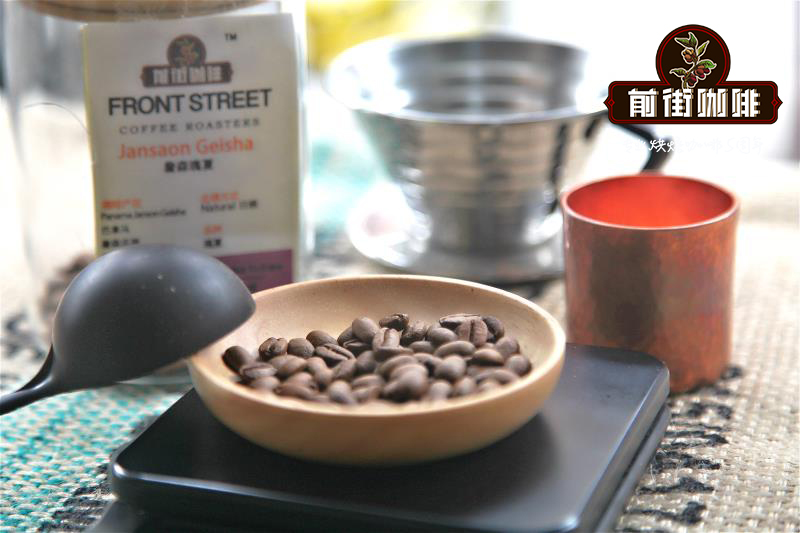Recipe skills of mixed Coffee how can the taste of blended coffee be best balanced?

Professional coffee knowledge exchange more coffee bean information please follow the coffee workshop (Wechat official account cafe_style)
Science and Art of mixed beans
Whether you are a small retail store, a local bakery or a regional baking company, your mixed bean recipe creates a market distinction and is a great tool for maintaining customer loyalty.
My experience of mixing beans was in Holland many years ago. In my hometown, like other Nordic countries, customers are used to buying standard recipes, usually with Brazilian beans with a little Central American beans, and usually with Indian beans and West African Robusta beans. My father became the preacher of individual coffee in the town and began to buy beans from a single manor in a single producing area in various countries to show the flavor that the producing area should have.
One day at my dad's self-baking shop, I decided to test some simple recipes. The test results were fascinating, and I found that mixing mellow and thin coffee (such as Sulawesi and Costa Rica) produced a very smooth taste. I also found another interesting phenomenon: mixing two coffee with good acidity does not necessarily produce a pleasant taste. Not only the sour taste enhances the uncomfortable sour taste caused by the acidity conflict between the two.
While doing the test, I also recorded the suitable combination. I am sure that one day we will find the following three best ways to match beans for coffee: Panama, Meso in India, and AA in Tanzania. Each ingredient is baked so that the baking degree of the bean can be clearly expressed. After mixing the beans, I cook them with French pressure and filter them with filter paper. The recipe is delicious; the vibrant acidity of Panama and the nutty flavors of Indian Meso combine beautifully with the chocolate and berry flavors of Tanzania. When I tried to remake this recipe, I found that I did not keep samples of baked beans with various ingredients and did not record the baking process in detail. It was a fascinating attempt, but I couldn't successfully remake the Panamanian recipe.
Mixed beans or unmixed beans
In boutique coffee doughnuts, individual coffee is becoming popular. It's easy to understand: individual coffee allows bean roasters and retailers to introduce the best flavor in a particular producing area when they sell it in the store. " I am also a fan of individual coffee, which can tell stories of production and unique planting environment, "said Michael Johnson, owner of Johnson Brothers Coffee in Madison." However, our formula beans give us the opportunity to knock on the doors of some big clients, such as local universities. "
As a result, mixed beans are still a dependent force: when creating a product that customers need, it provides an opportunity for bean bakers to test their technology. " I think there are very few reasons to mix beans, "said Geoff Watts, vice president of coffee and tea knowledge in Chicago." The first reason is to aim at stability throughout the year. Some people don't like change and want coffee to taste the same in their store in January as it did in June last year. " All coffee is seasonal and perishable, so creating a formula can keep it fresh and stable even with changes in ingredients over a year.
"the second, more compelling reason is that mixed beans can produce flavors that individual coffee doesn't have," Watts said. This is the art of mixing beans. " This fascinates me that different flavors of coffee can produce unexpected results. It is not the result that 1x 1 is not equal to 2 or 1 and 1.
This is the advantage of mixing beans properly and the disadvantages of mixing beans incorrectly. Because each ingredient in a cup of mixed coffee has its own way of expressing its characteristics, a good cup tester can clearly distinguish its composition. In another case, one kind of coffee dominates the other, and the incongruous nature of the cup tester makes it impossible for the tester to recognize the other coffee.
Another advantage of mixed beans is the long-term performance of retail demand. Coffee tastes the same not only every month, but also every year. The Greek Batdorf and Bronson coffee roaster developed its "sheep flying Dancing Goats" formula more than a decade ago, and it is still the company's best-selling product today. " The best formula can be used in both espresso and follicular cooking, "says Larry Challain, founder of Batdorf and Bronson, whose bean philosophy is mixed. This recipe consists of five individually baked ingredients that produce a popular flavor profile: rich, full, sweet and smooth with chocolate and berry flavors. Each ingredient in the formula is manufactured by our two bean baking equipment every day and is tested by the Bean Baker Cup.
Set up the formula
Over the years, I have helped many coffee companies around the world develop formula beans, and I usually follow the steps I will introduce in this article. If there is no proper strategy cheese to develop a formula is a great challenge, in the end may be the result of shooting birds, because only a few recipes will succeed.
I recommend a five-step development step so that you can plan and execute product development, and your company has created at least three successful recipes.
First, plan the way to make the formula. Ask a few basic questions at this stage: what kind of customer is this recipe for? Is the home, restaurant, or this recipe versatile? The basic task at this stage is to outline the flavor of the recipe and link it to the appropriate degree of baking. The roaster or coffee owner should know which flavor attributes to look for. Is this recipe refreshing with medium acidity or chocolate and nutty flavors and a rich finish? These are obviously the basic problems before setting up the formula.
The second is the important task of selecting ingredients. My view is that these coffees should be selected according to their individual quality attributes; each ingredient must be a competent individual coffee. Some companies have bad reasons for matching beans to cover up the ordinary beans in the ingredients. I believe this is the stupidest strategy and only takes short-term gains (higher profit margins) and loses dissatisfied customers without long-term consideration.
Third, determine the baking degree of each ingredient to be used. This is a decisive step and each ingredient in the formula must be extensively explored. I have noticed that many coffee companies ignore this step, causing them to set a specific baking method for each ingredient too quickly. Remember, different coffees have an appropriate roasting degree, not just one roasting degree as a whole. So the baking process and seemingly innumerable baking degrees can cause endless nightmares for bean dispensers. For this reason, I have defined seven baking degrees, as shown in Table A. Since there is so much confusion about the baking degree, I will express each baking degree as an Agtron color range to describe the baking process.
Generally speaking, I recommend exploring the baking degree of medium light baking, medium baking, and "well done well-done". Too many baking companies ruthlessly replicate some well-known coffee brands, so we have seen a lot of deep roasting, very deep roasting and French roasting, which accept the concept of multi-caramelization and baking rather than develop real flavors.
In the shallow roasting mode, you will retain the true flavor of the coffee, with complex and light sweetness and refreshing qualities. Try to build a shallow baking niche in your market! Light coffee roasting must be paid attention to, such as light roasting or medium roasting, especially to strengthen your roaster's skills. The automatic baking system cannot produce an excellent flavor in a shallower baking mode, so the baker must make sure that the appropriate baking mode works properly.
Fourth, we should really identify the main ingredients of the beans. Now you must choose the raw beans and their respective baking degrees. As described in Table B, Table B lists ten recipes and recommended recipes and baking degrees.
Remember, it's important to write down a detailed note of your choice of raw beans, how you bake them and how much percentage you use. When you have finished a recipe you love, you will want to redo it to make each ingredient perfect. It is a fait accompli that the quality of coffee changes from season to season, and I suggest you re-evaluate your recipe at least every three months.
Whether the formula beans are the main product of your baking company or the choice you just offer, remember that we mentioned a proverb earlier: the result of the coffee formula is better than each ingredient put together. So an excellent recipe is to make sure each is perfect before mixing the ingredients. Creating a reproducible recipe desperately requires your tasting skills, and even if you have created the perfect recipe, your guest is still the final reviewer. Good luck on your way to discovering the recipe!
Basic bean
Brazil:
Choose pulped natural treatment, the flavor is full of mellow, no mildew taste, slightly aftertaste of fermented fruit.
Sumatra:
Choose Gayo or Mandheling producing areas with a clean local flavor, and the two selected ones are the best.
Panama:
I suggest choosing Panama grown by Volcanor Santa Clara, with mild to bright acidity and slender sweetness.
Guatemala:
Choose SHB Guatemala, which is sour and lively with clean fruit flavor. (these features bring touching acid in the shallow quilt and chocolate flavor in the deep baking.)
Kenya:
Choose a first-class bean flavor with multiple levels of acidity and bright berry flavor (these oppositarianism flavors)
Ethiopia:
I suggest Grade 3's sun shaker or sun sidamo, which has a good ripe fruit flavor and rich fruit flavor.
Nicaragua:
Prepare beans from Nueve Segovia or Jinotega producing areas with surpassed fruit flavor and smooth taste.
Colombia:
In terms of beans, I prefer Columbia of caturra or typica, with bright acidity, full mellow and clean aftertaste. There can also be some fruit characteristics, but if you choose beans from Huila producing areas, be careful that the fruit flavor may dominate the whole.
Low caffeine:
I suggest using Mountain water treatment for low caffeine beans or Swiss water treatment for low caffeine beans. I suggest trying Ethiopian decaffeinated beans.
Qianjie coffee: Guangzhou bakery, the store is small but a variety of beans, you can find a variety of unknown beans, but also provide online store services. Https://shop104210103.taobao.com
Important Notice :
前街咖啡 FrontStreet Coffee has moved to new addredd:
FrontStreet Coffee Address: 315,Donghua East Road,GuangZhou
Tel:020 38364473
- Prev

What kind of mixed coffee are suitable for coffee shops? Definition and benefits of Comprehensive Coffee beans
Professional coffee knowledge exchange more coffee bean information please pay attention to the coffee workshop (Wechat official account cafe_style) comprehensive coffee beans, also known as formula coffee beans, mixed coffee beans, blended coffee beans (mainland), English is blend coffee, is a concept relative to individual coffee beans, the simple distinction is: single coffee beans: a packet of coffee beans, all the same
- Next

What's the difference between ethelbiya gashfi and sidamo? Taste and Flavor of Yerga Shefi
Professional coffee knowledge exchange More coffee bean information Please pay attention to coffee workshop (Weixin Official Accounts cafe_style)(Yejia Xuefei) Yejia Xuefei grows in the west Damo producing area in southwest Ethiopia. Coffee beans belong to small and medium-sized particles. The color of raw beans is light yellow-green. The beans are complete and beautiful. They have a certain representative position in fine coffee in East Africa. Now at ECX
Related
- Guji coffee producing area of Guji, Ethiopia: Humbela, Shakiso, Wulaga
- What is the most expensive variety of Qiloso in BOP multi-variety group?
- How to store the coffee beans bought home?
- Why are Yemeni coffee beans so rare now?
- Ethiopian Sidamo all Red Fruit Sun Sun Santa Vini Coffee beans
- SOE is mostly sour? What does it mean? Is it a single bean? what's the difference between it and Italian blending?
- Is Italian coffee beans suitable for making hand-brewed coffee?
- How to choose coffee beans when making cold coffee? What kind of coffee beans are suitable for making cold coffee?
- Just entered the pit to make coffee, what kind of coffee beans should be chosen?
- Can only Japan buy real Blue Mountain Coffee? What are authentic Jamaican Blue Mountain coffee beans?

